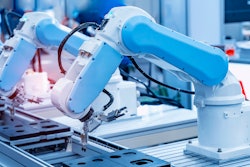
The marriage of Manufacturing and IoT: It has been called Industrial Internet, Digitization of Manufacturing, and Manufacturing 4.0. It has been hailed as a revolution and declared as win-win. With all this talk of marrying the two, we would be remiss not to heed the warnings that half of all marriages end in divorce.
Can today’s manufacturers do without the Internet of Things? Is there an inherent benefit is adding informatics to mechanics? Or could all this talk of Big Data be creating more problems than it solves? Reports show that many companies are not ready for this marriage – are they the minority laggards that refuse to get with the times or the early adopters of something the rest of us haven’t heard of yet?
Examining the alternatives leads to solving the conundrum at hand.
Connecting manufacturing with IoT, Big Data, and digitization, promises four main benefits. To compete with intelligent manufacturers like Harley Davidson and GE that have already opted to adopt IoT innovations, companies would need alternate plans to:
1. Expedite efficiency
2. Increase productivity
3. Reduce marginal cost of producing and distributing goods and services
4. Save resources and improve sustainability
While investing in better machines or finding better people to operate them may create the results in these realms, it cannot create results that compete with those fueled by innovation.
As illustrated clearly in the automotive industry, not shifting from a hardware-based mechanical production process to a software-based innovative process forgoes an important competitive edge. Adding intelligent components into manufacturing reduces costs and enables efficiencies that cannot be matched by mechanical improvements.
To look toward tactical, mechanical improvements as an alternative to strategic innovations promised by the IoT is to be shattered by disappointment.
It seems that on a hypothetical level, manufacturing and IoT is match made in heaven. In fact, at this year’s annual World Economic Forum in Rome, Klaus Schwab, the Forum's founder and executive chairman, described an era of automation, constant connectivity, and accelerated change, in which the Internet of Things meets the Smart Factory.

However, the benefits of making our manufacturing smart are not just theoretical, there are concrete reasons to make the transformation.
Especially in large manufacturing operations, there is often a problem with information silos. A few years ago, Fast Company declared, “To Build Your Business, Smash Your Silos.” Connecting equipment and enabling devices to communicate with each other creates a free flow of information, which streamlines operations, improves employee morale, and contributes to a positive corporate culture. It breaks the barriers caused by information silos and it can only be made possible by connected devices.
When assets are connected and monitored, manufacturers can improve their performance, optimize their schedules, reduce operational risk, and minimize TCO.
Simply by shifting from traditional preventative maintenance to information-based predictive maintenance companies can identify anomalies early on and service only the equipment that requires service to avoid unnecessary costs and expensive downtime. This transformation also has information at its core and cannot be leveraged without connecting manufacturing systems.
The granular reporting that is made possible with smart machines for various metrics creates a competitive edge. Manufacturers can understand the metrics that gauge operation for the entire plant, each production line, and even every individual machine. They can then compare them to historical data, benchmark them against similar systems, and evaluate them against industry standards. This is the way smart manufacturers are able to drive optimizations that increase revenue and decrease waste.
While manufacturers today may be able to continue functioning without IoT advancements, looking ahead, it is clear to see that not adopting this technology today will impede them in the future.
It seems then, that the marriage of manufacturing and IoT is indeed an institute you can't disparage.
Yaniv Vardi is the General manager at Panoramic Power, a member of the Direct Energy group of companies, and a leading provider of device level energy management solutions. Yaniv is a seasoned executive with close to two decades of leadership experience in the Enterprise Software Solution Industry. As CEO of Panoramic Power, he oversees the day-to-day operations of the company as well as provides vision, strategic direction and focused execution for the company.






















